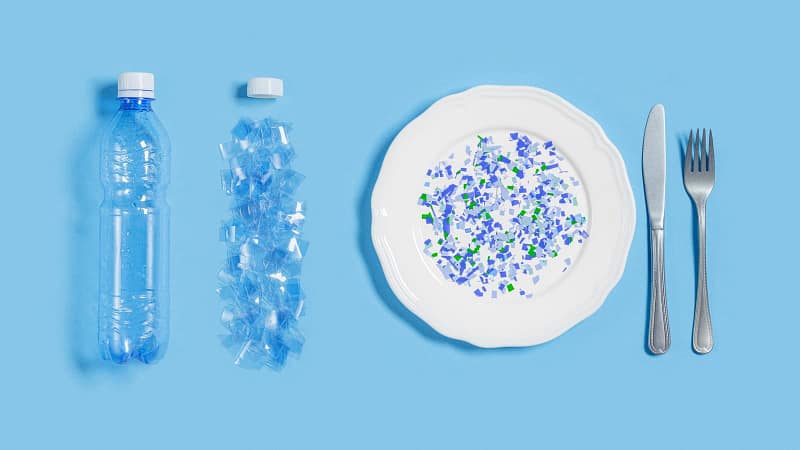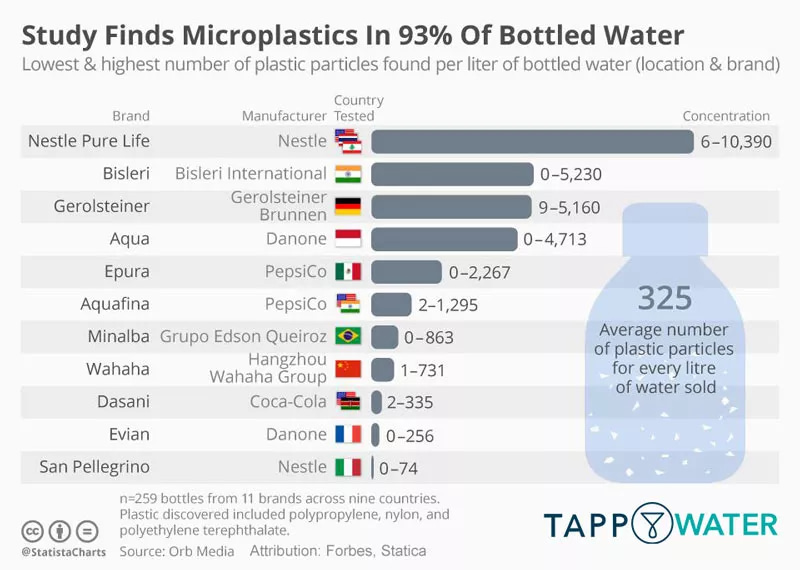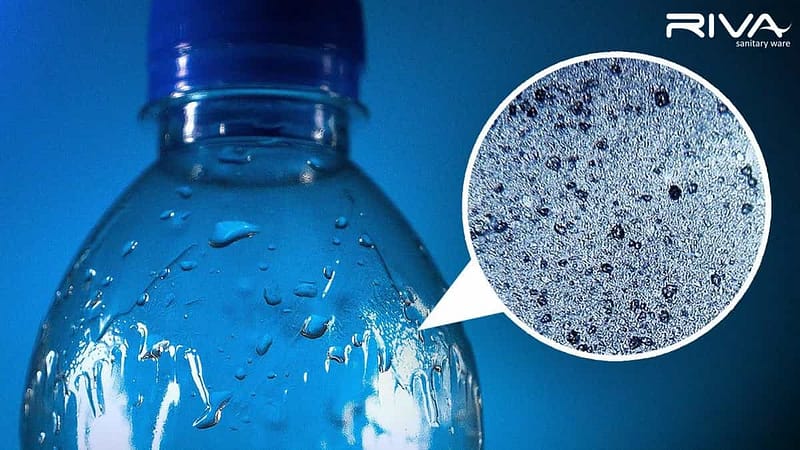Microplastics, as the name implies, are tiny plastic particles. Officially, they are defined as plastics less than five millimeters (0.2 inches) in diameter.
Once at sea, sunlight, wind, and wave action break down plastic waste into small particles, often less than one-fifth of an inch across. These so-called microplastics are spread throughout the water column and have been found in every corner of the globe, from Mount Everest, the highest peak, to the Mariana Trench, the deepest trough.
Microplastics are breaking down further into smaller and smaller pieces. Plastic microfibers, meanwhile, have been found in municipal drinking water systems and drifting through the air.
Microplastic and water bottle

Bottled water, which many of us turn to as a healthier alternative to tap water, may contain excessive levels of microplastics. The presence of microplastics in water bottles can be attributed to multiple factors, including the manufacturing process, packaging materials, and even the water source itself. Several studies have detected microplastic contamination in bottled water, with particles found in both the water itself and the bottle caps. These microplastics can enter the water during the production, bottling, or transportation stages.
Plastic contamination is rampant in bottled water. That was the unsettling conclusion of a study published last year in Frontiers in Chemistry that analyzed samples taken from 259 bottled waters sold in several countries and found that 93% of them contained “microplastic” synthetic polymer particles.

The problem with microplastics is that like plastic items of any size they do not readily break down into harmless molecules. Plastics can take hundreds or thousands of years to decompose and in the meantime, wreak havoc on the environment. On beaches, microplastics are visible as tiny multicolored plastic bits in sand. In the oceans, microplastic pollution is often consumed by marine animals.
Environmental Impacts

The impact of microplastics on the environment is a growing concern. Researchers in Germany have warned that the impact of microplastics in soils, sediments, and freshwater could have a long-term negative effect on such ecosystems.
The problem is that these particles are entering the food chain, and the surfaces of tiny fragments of plastic may carry disease-causing organisms and act as a vector for diseases in the environment
Microplastics can also interact with soil fauna, affecting their health and soil functions.
Human Health Concerns

Scientists are still unsure whether consumed microplastics are harmful to human or animal health—and if so, what specific dangers they may pose. Even so, many countries are taking action to reduce microplastics in the environment. A 2017 United Nations resolution discussed microplastics and the need for regulations to reduce this hazard to our oceans, their wildlife, and human health.
Mitigation Strategies
Addressing the microplastic crisis requires collective effort and proactive measures. Here are some strategies that can help mitigate the spread and impact of microplastics:
- Reduce Single-Use Plastics: Minimize the use of disposable plastic items such as bags, bottles, and straws. Opt for reusable alternatives whenever possible.
- Choose Natural and Sustainable Materials: When purchasing clothing or personal care products, select items made from natural fibers or materials that are less likely to shed microplastics.
- Support Proper Waste Management: Ensure proper waste disposal and recycling practices to prevent plastic pollution from entering water bodies and ecosystems.
- Advocate for Regulation: Encourage governments and regulatory bodies to implement policies that restrict the use of microplastics in consumer products and promote sustainable alternatives.
- Raise Awareness: Educate others about the issue of microplastics, its impact on the environment, and the importance of individual actions in reducing plastic pollution.
Conclusion
Microplastics pose a significant threat to our environment, from the depths of our oceans to the air we breathe. The pervasive nature of these tiny plastic particles demands urgent action. By adopting sustainable practices, supporting research, and advocating for change, we can collectively address the microplastic crisis and strive towards a cleaner and healthier future for our planet and ourselves.



